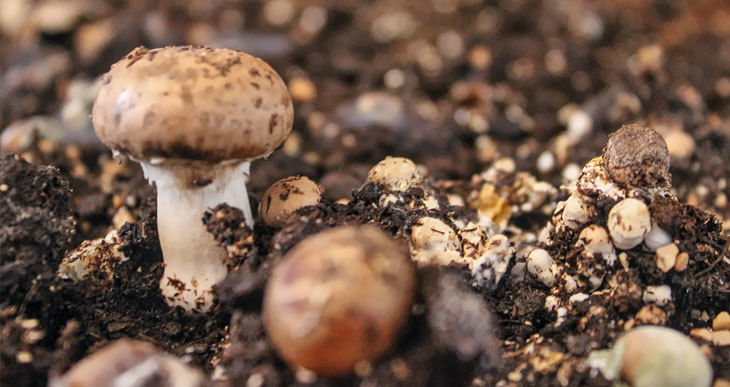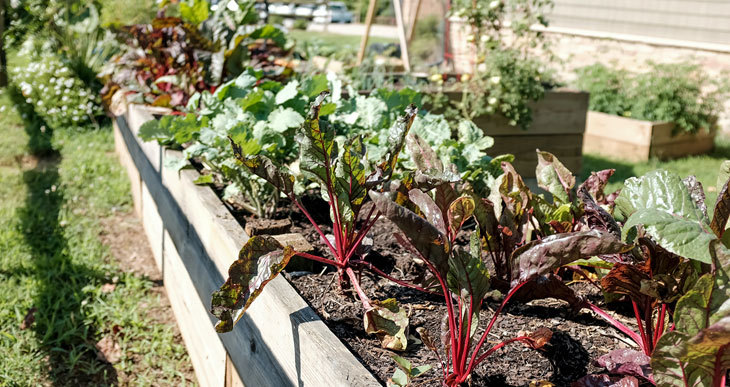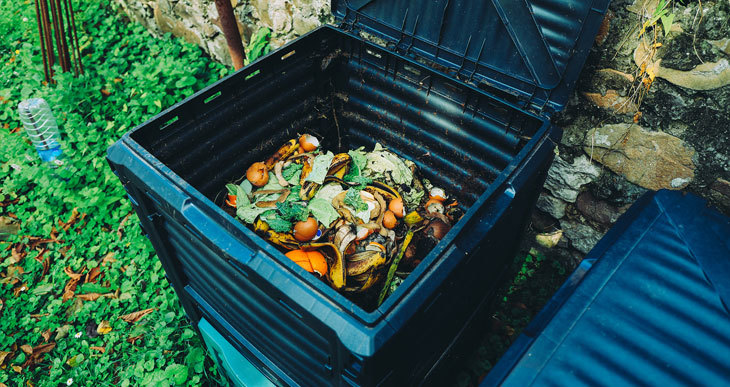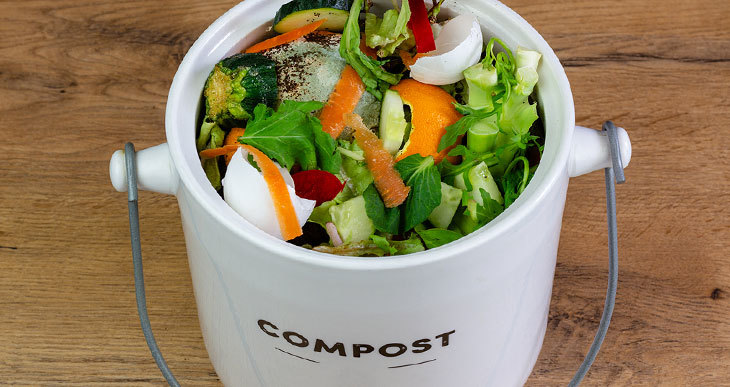How To Make Mushroom Compost (Like a Pro)

Mushroom compost is typically used by mushroom growers as an organic, slow-release substrate for growing mushrooms.
But apart from producing mushrooms, this type of compost also has other garden benefits, which prompts people to make this compost for themselves.
If you don’t want to be “in the dark” about mushroom compost making, you can learn all about how to use it, what it is, and how to make it right here!
How Do You Make Homemade Mushroom Compost
Mushroom compost is made by hot-composting organic matter such as wheat straw, hay, corncobs, horse stable bedding, and horse or poultry manure with gypsum. The hot-composting kills weed seeds in the mixture and produces a slow-release, high-salt fertilizer in about 3 to 4 weeks.
The ingredients used to make mushroom compost can vary from region to region, but the ingredients we have mentioned are the most common types used. Other ingredients can include peat moss, soybean meal, and other organic materials.
The main factor regarding the ingredients is that they must be organic and able to break down quickly.
Heat is a prime part of the process, which helps to break down the material quickly, accelerate the growth of the decomposing bacteria and inoculate the compost by killing weed seeds and harmful organisms in the compost.
What Is Mushroom Compost
Mushroom compost for the mushroom grower is the substrate on which the mushrooms are grown directly. Mushrooms are not typically grown in soil, so the mushroom compost must provide all the nutrients for these fungi to flourish.
For the general gardener, mushroom compost is a rich organic material loaded with minerals, salts, and nutrients. It is a slow-release compost that can provide long-term feeding for plants in the garden without the need for frequent replenishing.
Is Mushroom Compost Acidic
Many people have the misconception that mushroom compost is acidic. This incorrect notion comes from the incorrect use of the compost, which causes seedlings to die. This is caused by hot compost being used in the soil. When seeds or seedlings are planted, the heat kills the plant’s roots or prevents the seeds from germinating. Mushroom compost must be allowed to cool before being used.
Mushroom compost is more alkaline than acidic, particularly when lime or gypsum is used in the ingredients to produce the mix.
What Is Mushroom Compost Made From?
Mushroom compost is not difficult to make, but it may take some time to source all the ingredients if you do not have access to them on your own property.
The main ingredients in mushroom compost are straw or similar materials such as wheat straw, hay, corncobs, or horse stable bedding.
Gypsum can be tricky to find but you can easily buy it online (Amazon)
Horse stable bedding is a popular option since it is often waste material that stables need to get rid of, and it contains horse manure and urine, which helps the process.
Horse or poultry manure is the next ingredient you will need and access to water. You need to make hot compost, which will require some sort of covering for the compost pile, such as black plastic sheets.
The quantities for the ingredients are as follows:
- Used horse bedding. You will need enough horse bedding, or alternative, to create a pile about 5 by 5-feet and at least 4-feet high.
- Horse manure. You will need about half this quantity in horse manure.
- Gypsum. About 20 cups of gypsum will suffice for the number of other ingredients.
- A compost thermometer. This is useful for monitoring the internal temperature of the pile.
To make your own homemade mushroom compost, you can follow the steps below, paying particular attention to achieving the right temperatures:
- Step 1. Wet the pile of hay or horse bedding and allow it to rest for 24 to 48-hours. If the straw becomes dry during this period, wet it some more. The straw soaks up the water like a sponge and provides moisture for the decomposing process.
- Step 2. Mix the horse manure and gypsum.
- Step 3. Add the horse manure gypsum mix a spadeful at a time, and evenly distribute it in the straw.
- Step 4. Once the manure and gypsum have been mixed in, wet the mixture again and cover the pile with black plastic sheets.
- Step 5. Leave the pile for two weeks, or until the temperature in the mixture gets to between 140°F and 160°F or 60°C to 71°C.
- Step 6. Once the pile has reached temperature, turn the pile every 2 to 3 days, moving the outer material to the pile’s center. Add more water each time you turn the pile. Do this for the next two weeks.
At the end of about 4 weeks, the pile should have turned a dark brown, and most of the organic matter should have broken down. You can leave it to mature for another week if there is still material that has not broken down sufficiently.
Before using the mushroom compost, you should uncover the pile and give it 5 to 7 days to cool down. Adding hot compost to your plants can do them more harm than good.
What Is Mushroom Compost Good For?
Mushroom compost has several uses in the garden, but one of its greatest benefits is the slow-release of nutrients back into the soil.
The uses for mushroom compost in the garden include soil fixing, particularly lowering the soil pH of acidic soil. Mushroom compost increases moisture retention in the soil and re-supplies nutrients to depleted soil.
The moisture-holding capabilities of mushroom compost make it popular for use as a mulch while depositing nutrients into the soil from above.
Is Mushroom Compost Good For Veg Gardens?

Mushroom compost is great for vegetable gardens. It helps enrich the soil with nutrients useful for plants to produce fruit, helps retain moisture in the soil, and improves aeration.
Do not use mushroom compost on vegetables that prefer acidic soils. In this case, mushroom compost will cause the plants to underperform.
Is Mushroom Compost Good For Tomatoes?
Tomatoes are easy to grow and a common vegetable choice for new gardeners. You may wonder if your tomato plants will benefit from a helping of mushroom compost.
Mushroom compost is good for tomatoes. The high calcium content in the compost helps with fruit production in the tomato plant. Tomatoes love water close to their roots, which is why flood irrigation is often used to water tomato plants. The water retention characteristics of mushroom compost can help to retain moisture at the tomato plant roots.
Is Mushroom Compost Good For Roses?
Mushroom compost works well in rose gardens since these plants like well-rotted horse manure as fertilizer. Since this is a key ingredient in mushroom compost, the product is ideal for feeding roses.
However, you should only add small quantities of mushroom compost as a periodic feed for the roses since roses prefer slightly acidic soil. Adding too much mushroom compost can reduce the acidity of the soil, which can be detrimental to the roses.
Is Mushroom Compost Good For Lawns?

Mushroom compost is seen as a particularly good top dressing for lawns. It is a good fertilizer to use on new lawns since there are no weed seeds in the compost to grow and compete with the new lawn.
Mushroom compost is frequently used as a top dressing on established lawns to add nutrients and promote lush growth.
Can I Use Mushroom Compost As A Mulch?
Mushroom compost makes a good mulch. It works well to suppress weed growth, keep soil temperatures stable, and leeches nutrients back into the soil from above as water permeates the mulch layer.
To be effective as mulch, spread the mushroom compost in a layer 2 to 3-inches thick over the garden bed.
How Long Does It Take To Make Mushroom Compost?
The composting process used to make mushroom compost is a technique known as hot composting. The heat is generated by the organisms and microbes as they feed and decompose the organic material in the compost.
The heat in this process makes for a fast composting process that can be completed in between 4 and 6 weeks. Most commercial mushroom compost (Amazon) is produced within 30 days.
Is Mushroom Compost Better Than Regular Compost?
Mushroom compost and regular compost both have their place in the garden and are good sources of nutrients.
Mushroom compost is generally used annually as a soil treatment or a mulch rather than as frequent food for the plants. Regular compost is less likely to change the pH of the soil and can be used as a more frequently applied plant food.
Mushroom makes a better lawn dressing than regular compost due to the specific nutrients it supplies. If you are looking for weed-free compost to improve the soil with a slow release of nutrients, mushroom compost is the best choice. Regular compost would be the preferred choice for regular feeding or a nutrient boost.
Should I Use Mushroom Compost?
AAny gardener, whether a vegetable gardener or otherwise, would benefit from including mushroom compost in their garden. It is a good all-purpose compost that can be used as a soil treatment, mulch, or top dressing for lawns.







